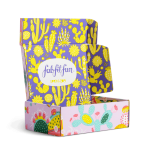In the bustling world of fast food and takeaway dining, one humble hero often goes unnoticed—the hamburger box. While our taste buds celebrate the juicy patties, fresh vegetables, and savory sauces nestled between soft buns, we rarely pause to appreciate the innovative packaging that makes this experience possible. The modern hamburger box is far more than a simple container; it’s a carefully engineered solution designed to preserve flavor, maintain structural integrity, and enhance convenience. From eco-friendly materials to smart designs that prevent sogginess, the evolution of the hamburger box represents a fascinating journey of culinary packaging innovation.
The history of hamburger packaging dates back to the early 20th century when paper wrappers were the standard. As hamburgers grew in popularity and complexity, so did the need for better packaging. The traditional wrapper often failed to contain the mess of a loaded burger, leading to disappointed customers and stained clothes. The introduction of the first dedicated hamburger boxes in the 1950s marked a significant turning point. These early versions were simple cardboard containers with a clamshell design, providing basic protection but little else. They were functional but lacked the sophistication needed to truly enhance the dining experience.
Today’s hamburger boxes are marvels of food packaging technology. Manufacturers have incorporated features like ventilation systems to control moisture, preventing the bun from becoming soggy during transit. Special coatings create a barrier against grease, ensuring the box remains intact and presentable. Some high-end designs even include separate compartments for fries and condiments, transforming the humble box into an all-in-one meal carrier. The use of sustainable materials has also become a priority, with many companies opting for recyclable or compostable options that appeal to environmentally conscious consumers. These advancements demonstrate how a seemingly simple product can evolve to meet changing consumer demands and environmental standards.
Beyond functionality, hamburger boxes play a crucial role in brand identity and marketing. The unboxing experience has become an essential part of customer satisfaction, with many restaurants using custom-printed boxes to reinforce their brand image. Vibrant colors, clever slogans, and unique designs turn the packaging into a mobile advertisement, extending brand visibility beyond the restaurant walls. Social media has amplified this effect, as customers frequently share photos of creatively packaged burgers, generating free publicity and attracting new customers. In this context, the hamburger box becomes not just a container but a powerful marketing tool that contributes to brand recognition and customer loyalty.
The environmental impact of food packaging has drawn increased scrutiny in recent years, pushing the industry toward more sustainable solutions. Traditional plastic and styrofoam containers, once staples of the fast-food industry, are being phased out in favor of eco-friendly alternatives. Modern hamburger boxes made from recycled cardboard, bamboo fibers, or biodegradable plastics offer the same functionality while significantly reducing environmental footprint. Some innovative companies have even developed edible packaging made from natural ingredients, though this remains a niche market. The shift toward sustainability reflects a broader consumer demand for environmentally responsible practices, forcing manufacturers to balance practicality with ecological considerations.
Looking ahead, the future of hamburger boxes appears promising and filled with potential innovations. Smart packaging incorporating QR codes that provide nutritional information or augmented reality experiences could become standard. Temperature-regulating materials might keep burgers warm while preventing condensation, ensuring optimal eating conditions. As delivery services continue to grow, we may see designs specifically optimized for transportation stability, with shock-absorbent features and improved sealing mechanisms. The integration of technology and packaging will likely redefine what we expect from something as simple as a hamburger box, turning it into an interactive and highly functional component of the dining experience.
In conclusion, the humble hamburger box deserves more recognition for its role in our culinary adventures. It has evolved from a basic wrapper to a sophisticated product that addresses practical concerns, environmental issues, and marketing needs. The next time you unwrap a delicious burger, take a moment to appreciate the engineering and thought that went into its packaging. The hamburger box may seem like a small detail, but it represents the intersection of food science, environmental responsibility, and commercial innovation—a true unsung hero in the world of fast food.




Leave a Message